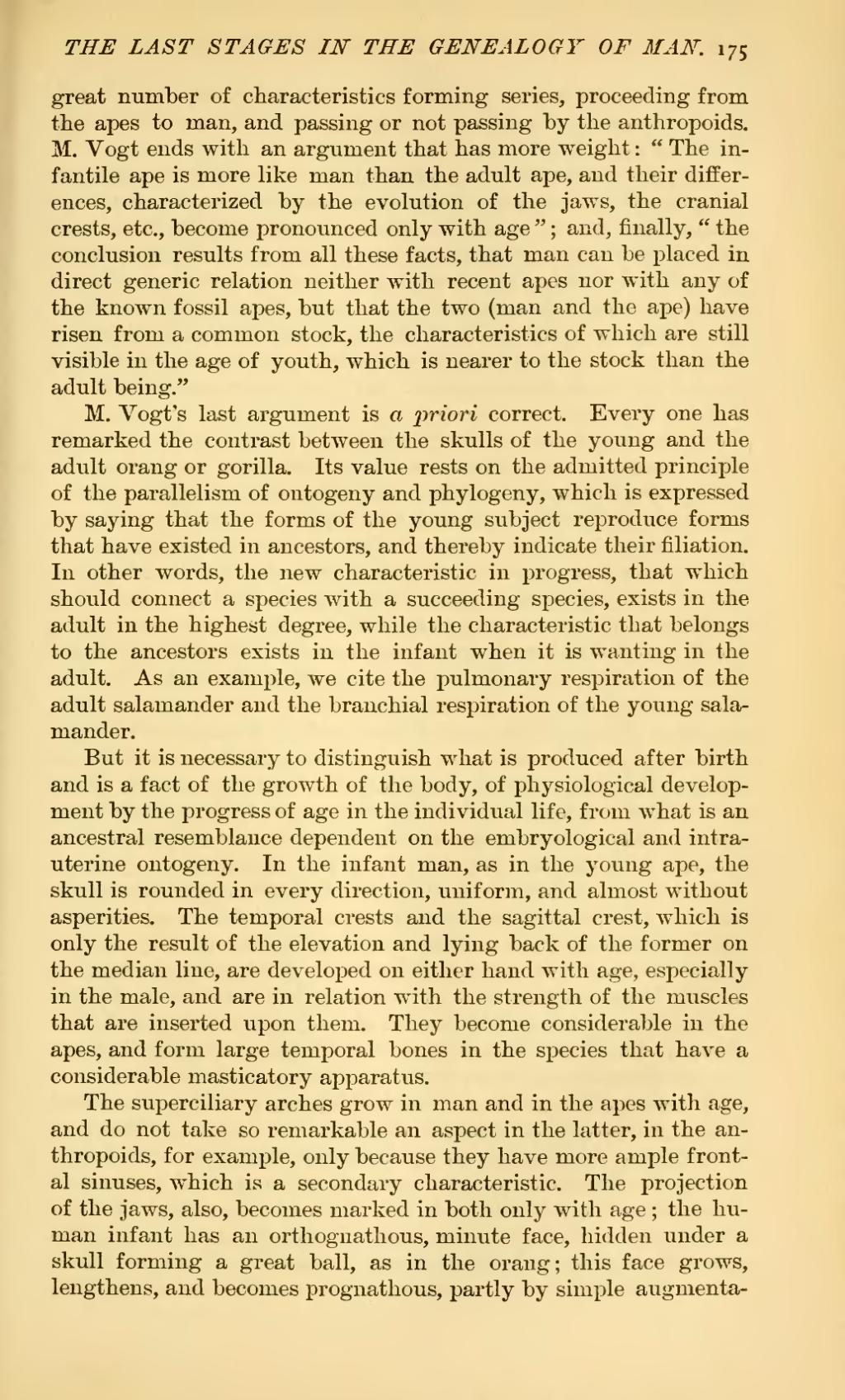great number of characteristics forming series, proceeding from the apes to man, and passing or not passing by the anthropoids. M. Vogt ends with an argument that has more weight: "The infantile ape is more like man than the adult ape, and their differences, characterized by the evolution of the jaws, the cranial crests, etc., become pronounced only with age"; and, finally, "the conclusion results from all these facts, that man can be placed in direct generic relation neither with recent apes nor with any of the known fossil apes, but that the two (man and the ape) have risen from a common stock, the characteristics of which are still visible in the age of youth, which is nearer to the stock than the adult being."
M. Vogt's last argument is a priori correct. Every one has remarked the contrast between the skulls of the young and the adult orang or gorilla. Its value rests on the admitted principle of the parallelism of ontogeny and phylogeny, which is expressed by saying that the forms of the young subject reproduce forms that have existed in ancestors, and thereby indicate their filiation. In other words, the new characteristic in progress, that which should connect a species with a succeeding species, exists in the adult in the highest degree, while the characteristic that belongs to the ancestors exists in the infant when it is wanting in the adult. As an example, we cite the pulmonary respiration of the adult salamander and the branchial respiration of the young salamander.
But it is necessary to distinguish what is produced after birth and is a fact of the growth of the body, of physiological development by the progress of age in the individual life, from what is an ancestral resemblance dependent on the embryological and intra-uterine ontogeny. In the infant man, as in the young ape, the skull is rounded in every direction, uniform, and almost without asperities. The temporal crests and the sagittal crest, which is only the result of the elevation and lying back of the former on the median line, are developed on either hand with age, especially in the male, and are in relation with the strength of the muscles that are inserted upon them. They become considerable in the apes, and form large temporal bones in the species that have a considerable masticatory apparatus.
The superciliary arches grow in man and in the apes with age, and do not take so remarkable an aspect in the latter, in the anthropoids, for example, only because they have more ample frontal sinuses, which is a secondary characteristic. The projection of the jaws, also, becomes marked in both only with age; the human infant has an orthognathous, minute face, hidden under a skull forming a great ball, as in the orang; this face grows, lengthens, and becomes prognathous, partly by simple augmenta-

